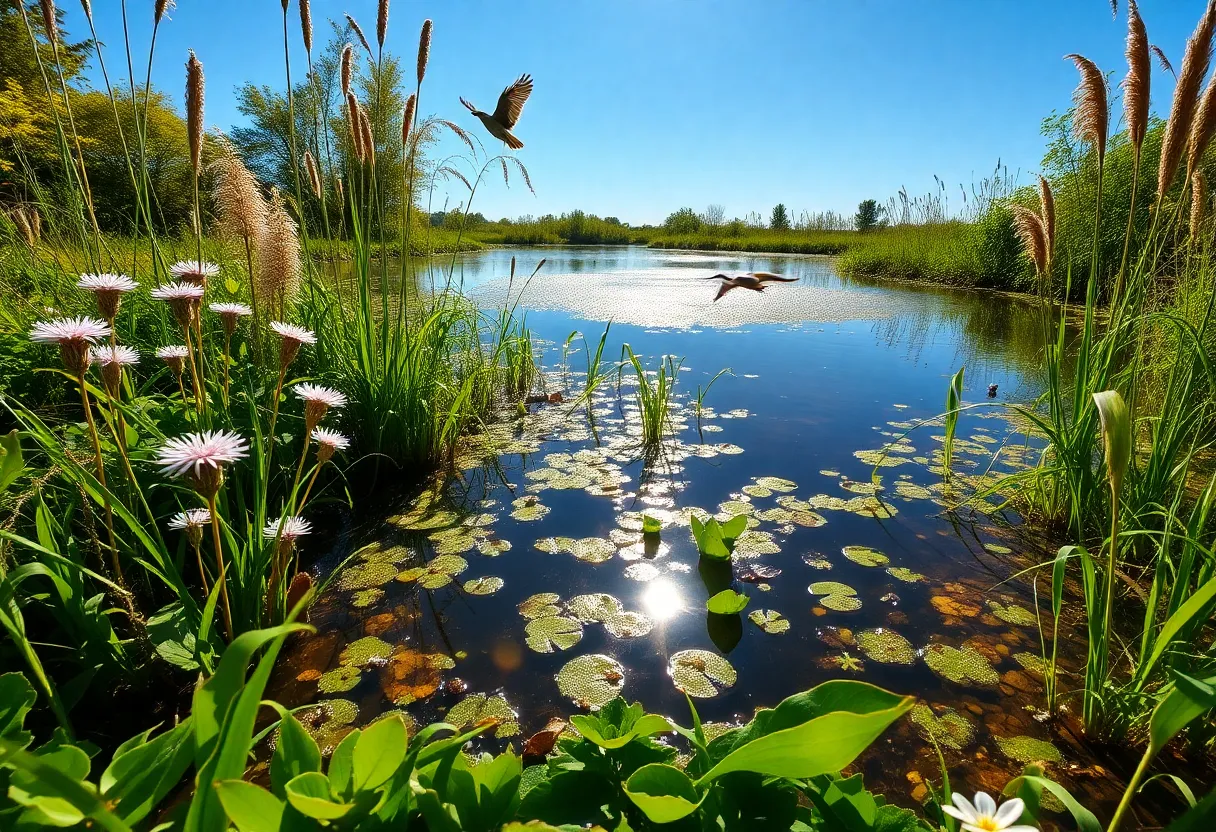News Summary
In Massachusetts, farmers are increasingly transitioning from traditional cranberry farming to wetland restoration projects due to economic and environmental challenges. Notable projects like the South Meadow Bogs restoration led by Jarrod Rhodes aim to convert bogs into thriving wetlands, incorporating native plant species and promoting wildlife habitats. With rising production costs and declining market prices, many cranberry growers view restoration as a viable alternative to farming. The trend is part of a broader push for ecological conservation, supported by funding for revitalizing the state’s historic wetlands.
Carver, Massachusetts – Farmers in Massachusetts are increasingly transitioning from traditional cranberry production to wetland restoration as they face economic pressures and environmental challenges. One notable project is led by cranberry grower Jarrod Rhodes, who is overseeing the restoration of the South Meadow Bogs in Carver. This initiative is part of a broader trend as the cranberry industry grapples with declining prices, rising production costs, and unpredictable weather patterns attributed to climate change.
The South Meadow Bogs restoration project is set to cost $1.1 million and will take approximately six to nine months to complete. This critical effort aims to convert a 32-acre cranberry bog into a fully functioning wetland. The new wetland will feature native plant species, including steeplebush and straw-colored flatsedge, which will provide essential habitats for wildlife such as wood frogs, hawks, and muskrats.
Rhodes, whose family has cultivated cranberries for generations on their 250 acres, has opted for restoration over rebuilding his bog. He noted the increasing economic and environmental difficulties that cranberry farmers face today. The Massachusetts cranberry industry has seen a consistent decline in its prominence since the 1990s when it was the leading producer in the United States. Today, the state accounts for around 22% of the nation’s cranberry crop, having been surpassed by Wisconsin.
Massachusetts cranberry farmers are increasingly turning towards conservation efforts as they navigate a challenging landscape. The decline in market prices for cranberries, along with rising costs associated with hybrid production methods, has created an environment where many view wetland restoration as a viable alternative to traditional farming or developing solar farms and housing projects on their land.
The state has seen a growing interest in returning many of the cranberry bogs, which were originally constructed on wetlands, back to their natural state. This is partly fueled by the available federal, state, and local funding aimed at coastal conservation projects, as wetlands provide significant ecological benefits, such as serving as wildlife habitats and filtering pollutants from water sources.
The Massachusetts Division of Ecological Restoration has successfully converted 400 acres of retired cranberry bogs into wetlands and has set a goal to restore an additional 1,000 acres over the next decade. In recent funding announcements, approximately $6 million in grants has been allocated for various restoration projects across twelve Massachusetts communities. In particular, the Pinnacle Bogs Restoration project in Plymouth is slated to receive a grant of $740,000.
The role of wetlands is increasingly seen as vital, especially regarding resilience against the effects of climate change and the improvement of water quality. Previous restoration efforts, such as the Eel River Preserve, have effectively restored biodiversity and created habitats for a variety of native species, highlighting the potential successes of wetland restoration initiatives.
As the demographic shifts among cranberry farmers become evident, with the average age now exceeding 60, there is a noticeable decline in interest from younger generations in continuing cranberry farming operations. This trend has resulted in more bogs being retired as farmers reassess the viability of their operations amid external pressures.
According to projections from the U.S. Department of Agriculture, the challenges in the cranberry market, coupled with difficulties in crop yield, are expected to lead to a decline in cranberry production moving forward. As a result, many farmers are opting for alternative uses for their land that align more closely with conservation efforts and ecological responsibility.
Deeper Dive: News & Info About This Topic
- Telegraph Herald
- Wikipedia: Cranberry
- ABC News
- Google Search: Cranberry Bogs
- The Guardian
- Google Scholar: Cranberry Wetland Restoration
- Patch
- Encyclopedia Britannica: Cranberry Farming
- Boston 25 News
- Google News: Wetland Restoration

Author: STAFF HERE BOSTON WRITER
The BOSTON STAFF WRITER represents the experienced team at HEREBoston.com, your go-to source for actionable local news and information in Boston, Suffolk County, and beyond. Specializing in "news you can use," we cover essential topics like product reviews for personal and business needs, local business directories, politics, real estate trends, neighborhood insights, and state news affecting the area—with deep expertise drawn from years of dedicated reporting and strong community input, including local press releases and business updates. We deliver top reporting on high-value events such as Boston Marathon, Head of the Charles Regatta, and Boston Harborfest. Our coverage extends to key organizations like the Greater Boston Chamber of Commerce and Associated Industries of Massachusetts, plus leading businesses in finance, biotech, and insurance that power the local economy such as Fidelity Investments, Biogen, and Liberty Mutual Insurance. As part of the broader HERE network, we provide comprehensive, credible insights into Massachusetts's dynamic landscape.





